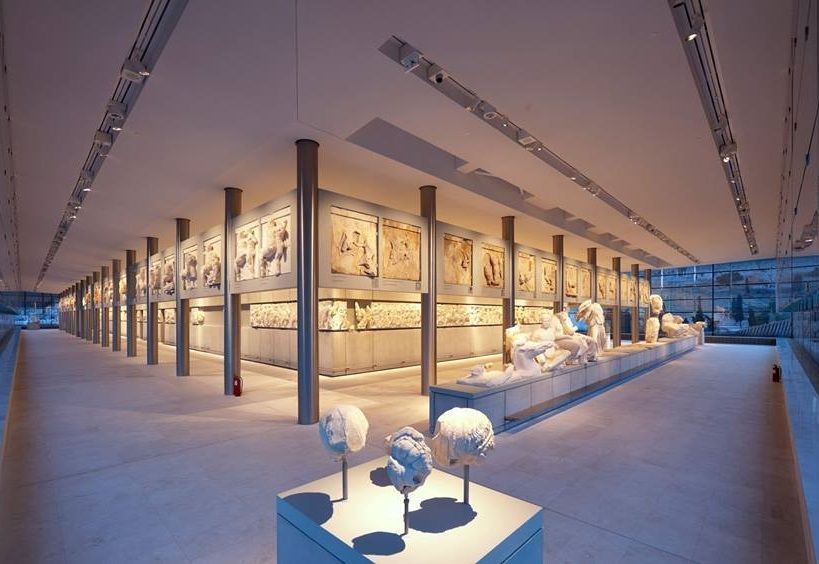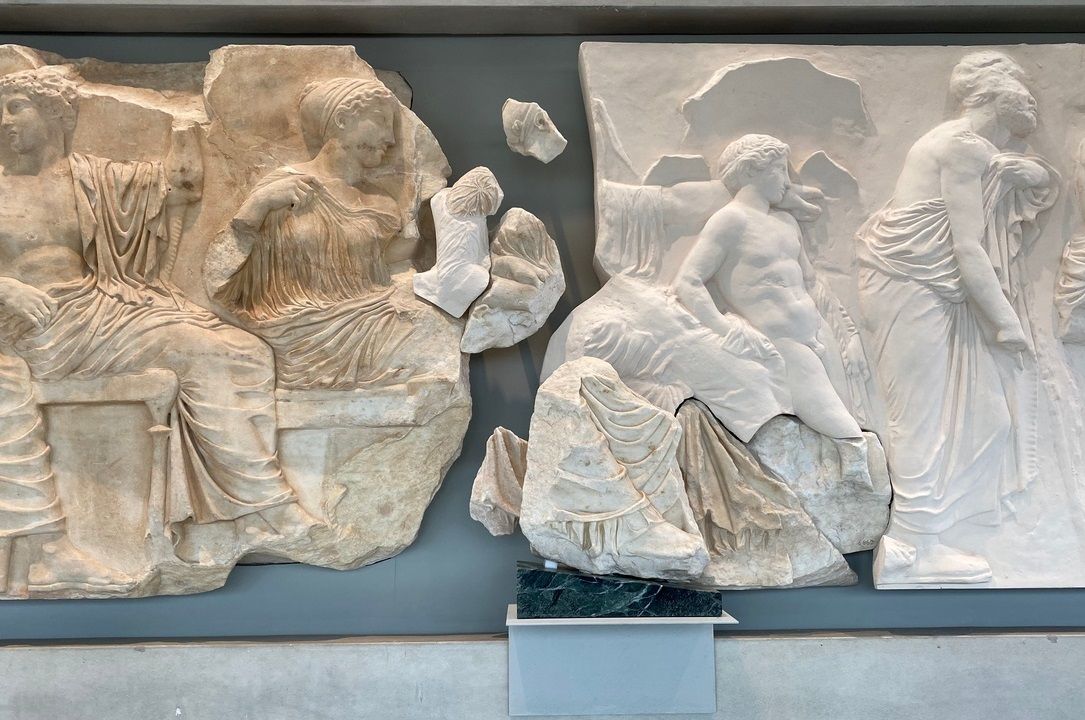UNESCO Committee Calls on Greece – UK to Resolve Parthenon Marbles Issue

The narrative of the story of the Panathenaic Procession is pieced together with a combination of the original blocks of the Parthenon’s frieze and cast copies of the pieces in museums abroad, such as the British Museum and the Louvre. Acropolis Museum, Athens. Photo Source: @Acropolis Museum
UNESCO has once again called on Greece and the UK to intensify efforts to resolve the long-standing dispute concerning the return of the Parthenon Marbles to Athens, announced the Greek Culture Ministry this week, citing the conclusion of the 23rd session in Paris of the Intergovernmental Committee for Promoting the Return of Cultural Property to its Countries of Origin or its Restitution in Case of Illicit Appropriation (ICPRCP).
Last week, the UK expressed the willingness to sit at the table with Greece to discuss the return of the 2,500-year-old sculptures which once adorned the Parthenon facade on the Acropolis, an UNESCO World Heritage site, were illegally removed by Lord Elgin in the 1800s and sold to the museum.
Under the committee conclusions, UNESCO recognizes the importance of initiating dialogue between the two sides at the level of culture ministers in the near future and calls on both sides to intensify their efforts to resolve the dispute, taking into account the historical, cultural, legal and moral dimensions of the issue.

The renowned Caryatids in the Acropolis Museum. The figures were originally six but one was removed by Lord Elgin in the early 19th century and is now in the British Museum in London. The pedestal for the Caryatid removed to London (second from the left on the front) remains empty.
“Greece welcomes the Recommendation of the 23rd UNESCO Intergovernmental Commission and is ready to enter into an honest and bona fide dialogue with the United Kingdom, taking into account its historical, cultural, legal and moral dimensions of the issue,” said Greek Culture Minister Lina Mendoni.
The minister referred to the agreement between Greece and Sicily for the permanent return of the Fagan fragment to Athens, which she said demonstrates that “there are solutions even to very difficult issues”.
The ICPRCP adopted its recommendation, which among others refers to previous Committee Recommendations and Decisions; expressed deep concern at the fact that the resolution of the issue remains pending for such a long time; and refered to a recent bilateral meeting between the prime ministers of Greece and the UK during which the issue was raised.
In the meantime, The Guardian on Sunday reported that the British Museum’s deputy director, Jonathan Williams, told the committee meeting that “much of the [Parthenon] frieze was in fact removed from the rubble around the Parthenon. … These objects were not all hacked from the building as has been suggested.”
Despite the rising pressure on the UK to return the illegally obtained items and evidence provided by committees for the repatriation of the Parthenon Marbles, the British Museum continues to refute the facts.
On Sunday, Mendoni commented on the issue in a statement to the Guardian. “Over the years, Greek authorities and the international scientific community have demonstrated with unshakeable arguments the true events surrounding the removal of the Parthenon sculptures. Lord Elgin used illicit and inequitable means to seize and export the Parthenon sculptures, without real legal permission to do so, in a blatant act of serial theft.”









The British Committee for the Reunification of the Parthenon Marbles (www.parthenonuk.com) listened to Jonathan Williams’s contribution at the ICPRCP and here are, Hon President, Professor Anthony Snodgrass’ comments:
“His generalisation, about what proportion of the sculptures was already ‘on the ground’, is impossible to quantify or even substantiate, as there was little in the way of documentary
record from the time. The major exception is that of the metopes removed from the S side of the Parthenon (Lusieri’s first target), where we do have the horrified accounts of Dodwell, Clarke and other visitors on the irreparable damage to the building from which they were in
the process of being violently detached.
The frieze is a different matter, because the best evidence is what we can still see today, in the shape of the sawn-off blocks in the BM. To reduce the weight for transport, Lusieri had the back of most blocks sawn across and discarded, so as keep intact just the sculpted
face. (Professor Pandermalis was able to recover, from the Acropolis stone collection, one of these rejected half-thickness backings, which many will have seen in the Acropolis Museum). In itself, this does not mean that every block had first to be lowered from its place on the upper part of the building; but the state of preservation of the vast majority of the BM slabs is surely enough to show that they had not fallen from 40 feet above, but had been carefully detached and lowered, to be sawn on the ground. The shortage of contemporary documentation of the frieze explains why William St.Clair’s treatment of it is so brief. but see Christopher Hitchens’s 2008 edition of ‘The Parthenon Marbles, A Case for Reunification, p.26 and bottom of p.33, for the ironical fact that we depend on a former Keeper of Greek and Roman at the BM (A.H.Smith) for the fullest account of the whole process.
The pediment figures are a different story again, as several of them, being free-standing statues, had indeed fallen to the ground, in or after the 1687 explosion; but the BM has the lion’s share of what survives (Hitchens pp.124-5).
So, all in all, it’s incorrect for the British Museum’s Jonathan Williams to say, whilst addressing UNESCO’s ICPRCP, that much of what Elgin took was already on the ground.”